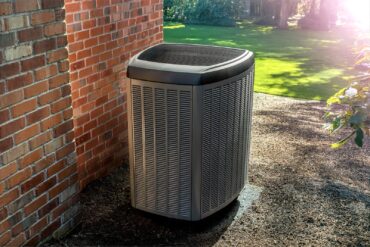 As Americans prepare to spend more cold cash to stay cool this summer, it’s more important than ever to learn how to leverage the benefits of The Inflation Reduction Act of 2022. Combining these offerings with some simple tips and tricks will help optimize energy-efficiency and minimize utility bills this summer and all year-round.
As Americans prepare to spend more cold cash to stay cool this summer, it’s more important than ever to learn how to leverage the benefits of The Inflation Reduction Act of 2022. Combining these offerings with some simple tips and tricks will help optimize energy-efficiency and minimize utility bills this summer and all year-round.
The Inflation Reduction Act of 2022 (IRA) is the largest-ever climate investment in American history, expected to reduce greenhouse gas (GHG) and cut home energy costs by incentivizing the adoption of highly efficient electric appliances — including heat pumps. In fact, the IRA specifically highlights the vital role of heat pumps to achieve its objectives.
A Heat Pump Primer
Heat pumps offer an energy-efficient alternative to furnaces and air conditioners for all climates and seasons.
The most common type of heat pump is the air-source heat pump (ASHP), which provides optimally efficient heating and cooling by extracting heat from outside your home in the winter and pulling the heat out of your home in the summer.
Today’s heat pump can reduce your electricity use for heating by approximately 65% compared to electric resistance heating such as furnaces and baseboard heaters. High-efficiency heat pumps also dehumidify better than standard central air conditioners, resulting in less energy usage and more cooling comfort in summer months.
For homes without ducts, ASHPs are available in a ductless version called mini-split heat pumps. Mini-split systems, offered by companies including Fujitsu General America, provide maximum energy efficiency, saving homeowners up to an additional 25% of utility bills by simply eliminating wasteful ducts. Duct losses can easily account for more than 30% of energy consumption.
Further, heat pumps are better for the environment because they don’t burn fossil fuels. In fact, even under conservative modeling assumptions, 98% of U.S. households would cut their carbon emissions by installing heat pumps today, according to Rewiring America.
Acting on the Inflation Reduction Act
The benefits boil down to two categories: tax credits and rebates. Specifically, there’s the 25C Tax Credit and two rebates including the High Efficiency Electric Home Rebate Act (HEEHRA) and the Home Owner Managing Energy Savings (HOMES) Rebate Program.
- Energy Efficient Home Improvement (25C) Tax Credit: 25C provides households a 30% tax credit for heat pumps, capped at $2,000 per year. The credit resets each tax year, effectively becoming available again for additional projects. 25C also includes a 30% tax credit up to $600 for an electrical panel upgrade, but only if it’s upgraded in conjunction with another upgrade covered by 25C (like a heat pump).
- High Efficiency Electric Home Rebate Act: The High Efficiency Electric Home Rebate Act provides point-of-sale consumer rebates to enable low- and moderate-income households to electrify their homes. For low-income households, the program covers 100% of heat pump costs up to $8,000. For moderate-income households, it covers 50% of costs up to $8,000. The rebates may be implemented differently in each state, so final amounts, eligibility or timeline may vary.
- Home Owner Managing Energy Savings Rebate Program: This program will provide funding to state energy offices to develop and implement a rebate program for whole-house energy saving retrofits including certain HVAC equipment. Unlike the HEEHRA program, the HOMES rebates program is not income-restricted but is rather performance-based with modeled or measured energy savings from energy-efficiency upgrades.
Simple Energy-saving Steps
Homeowners can prevent a utility bill blitz by following a few easy and practical tips. And, with home heating and cooling accounting for more than half (54%) of home energy use, small changes can go a long way..
- Raise your rating: System performance is measured by its Seasonal Energy Efficiency Ratio (SEER) rating for air conditioners and Heating Seasonal Performance Factor (HSPF) for heat pump systems. Similar to a car’s miles per gallon, a higher rating means better energy-efficiency and a smaller carbon footprint. Plus, federal and local rebates are based on higher efficiency ratings. Homeowners can visit Energy Star to learn more about the best systems for their home.
- Seal the deal: Homeowners can enjoy a 10-20% energy savings by simply sealing air leaks. One of the quickest energy- and money-saving tasks is to caulk, seal and weather strip all cracks and large openings to the outside. Seal air leaksaround windows, doors and places where pipes and wires come through walls. Check existing caulking and weather-stripping for gaps or cracks. It’s a do-it-yourself activity that costs less than an estimated $30 and saves big bucks.
- Ward off energy vampires: An “energy vampire” is a device that continues to draw power even when it is turned off or idle — accounting for as much as 20% of your electric bill. A few examples are coffee makers, toasters, hair dryers, laptops and other appliances that are plugged in but aren’t in use all the time. Unplug them completely or connect them to advanced power strips that will cut power when appropriate.
- Find your efficient comfort zone: Many of us live in homes designed for bigger families but have yet to downsize. If you find yourself using a fraction of your home on a regular basis, consider upgrading to a zoned ducted or ductless system. That will allow you to save energy heating and cooling spaces where you and your family don’t spend a lot of time. This will multiply savings as you’re not only needing less cooling but you also gain from a more efficient system in the spaces you do still use.
- Turn it down: Even a slight temperature decrease can make a difference. You can save as much as 10% a year on heating and cooling by simply adjusting your thermostat a mere 7-10 degrees for eight hours a day from its normal setting. For example, keep your house warmer than normal when you are away, and set it as high as is comfortable when you are home.
- Work your windows: About 76% of sunlight that falls on standard double-pane windows enters to become heat, according to the U.S. Department of energy. Close all windows and coverings to keep your house cool. For natural light, open those window coverings that don’t get direct sunlight. When selecting new windows, consider factors including the frame materials, the glazing or glass features, gas fills and spacers, and the type of operation.
- Choose coverings wisely: Not all coverings are created equal. Cellular shades can reduce unwanted solar heat through windows by up to 60%. Window blinds — vertical or horizontal slat-type — are effective at reducing summer heat gain and glare while providing good daylight indoors. Close draperies on windows receiving direct sunlight to prevent heat gain. Studies show that medium-colored draperies with white plastic backings can reduce heat gains by 33%.
- Make some friends: Align yourself with a quality HVAC contractor to provide annual maintenance and service. A properly maintained system will provide years of reliable efficiency, extended functional life and constant household comfort.
The secret to energy-efficiency success is to consider the big picture, focusing on a comprehensive “whole house” approach that leverages the full spectrum of resources at your disposal. For more information about the IRA benefits, visit Rewiring America and www.constantcomfort.com to find a heat pump system that would suit your home’s needs.





























